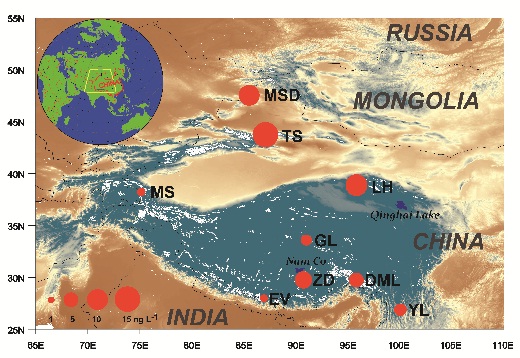| News |
| Latest news | |
| Int’l Cooperation activities | |
| Events & Announcement | |
| Recent Activities |
| Location: Home>News>Recent Activities |
| Breakthroughs made in the study of mercury distribution in West China |
From 2005 to 2010, extensive glacier snow sampling campaigns were carried out over western China by ITP Prof. KANG Shichang and his colleagues. The research team selected 14 snowpits from 9 glaciers to obtain the vertical distribution profiles of mercury (Hg). Their study found that the Total Hg (THg) concentrations in the glacier snow ranged from <1 to 43.6 ng L-1, and exhibited clear seasonal variations with lower values in summer than in winter. Higher THg concentrations are typically observed in glacier snows from the northern region where atmospheric particulate loading is comparably high.
The group also found large dependence of glacier snowpit Hg on particulate matters, especially particulate Hg that is less prone to postdepositional changes, thus identifying glacier snowpit Hg as a valuable record of atmospheric Ng deposition. Accordingly, they estimated atmospheric Hg depositional fluxes as ranged from 0.74 to 7.89 mu g m(-2) yr(-1), which agree very well with the global natural values, but are one to two orders of magnitude lower than that of the neighboring East Asia. Moreover, the group discovered elevated Hg concentrations in refrozen ice layers in several snowpits subjected to intense melt, and thus warned that Hg can be potentially released to meltwater.
Such research is the first comprehensive one of mercury distribution in the data-scarce western China. Entitled “Mercury Distribution and Deposition in Glacier Snow over Western China”, it has undergone peer-reviews and recently been published in Environmental Science and Technology (IF:5.23). As West China is home to the largest aggregate of glaciers outside the polar regions, this study not only reveals the existence of Hg in remote areas of China, but also lays a sold foundation for further study of how the glaciers in this area affect the transport and cycling of mercury (Hg) regionally and globally. |


